Please read this scenario prior to answering the question
The ArchiSurance senior management, board members, customers, and major stockholders have expressed long-standing concerns regarding the business continuity risks associated with relying on a single data center. Located in an area prone to
flooding, earthquakes, and occasional water leaks from the cafeteria above, the current data center has significant vulnerabilities.
To address these concerns and mitigate the risks, ArchiSurance has developed a comprehensive plan to relocate its existing data center to two separate ready-to-use data centers in different cities. As a major undertaking, the approval of the Board of
Directors is required to proceed with the project.
The primary objectives of the data center move are to reduce the risk of business interruptions, reduce both planned and unplanned downtime for critical applications, and provide reassurance to ArchiSurance stakeholders. Ensuring minimal disruption
during the transition is crucial. However, several constraints make the planned migration to the new data centers particularly challenging. Certain critical ArchiSurance applications cannot be offline for more than one hour, and any planned downtime must
be restricted to specific four-hour windows on weekends. Additionally, the migration cannot take place during quarterly or year-end closing periods to avoid disrupting critical processing operations.
ArchiSurance management has devised a multi-phase data center transformation program to facilitate a smooth transition. Each phase is critical for establishing stable and fully functional data center configurations throughout the transformation process.
The initial phase entails detailed scheduling and planning to develop a comprehensive transformation plan aligned with ArchiSurance's timing and scheduling requirements. During the second phase, ArchiSurance will procure the necessary hardware and
software for the new data centers, while also seeking refunds for the hardware and software in the current data center once it is decommissioned. The third phase involves setting up the new data centers and conducting parallel testing of the new
hardware and software alongside the existing production environment. The transition between the old and new data centers occurs in the fourth phase, followed by the fifth phase, which is the decommissioning of the old data center. This involves
returning the hardware and software to obtain the contracted refunds. Each phase, from the second to the fifth, is initiated once specific conditions outlined in the previous phase have been met.
Refer to the Scenario
The IT department's leader has assigned you the task of creating a model to explain the rationale behind Archisurance's decision to transform its data center infrastructure. The model should show the concerns and motivations of the stakeholders
involved. Additionally, it should outline the specific goals to be achieved through the data center transformation program, the associated deliverables, and the limitations that must be considered throughout the program's implementation.
Which of the following answers provides the best explanation?


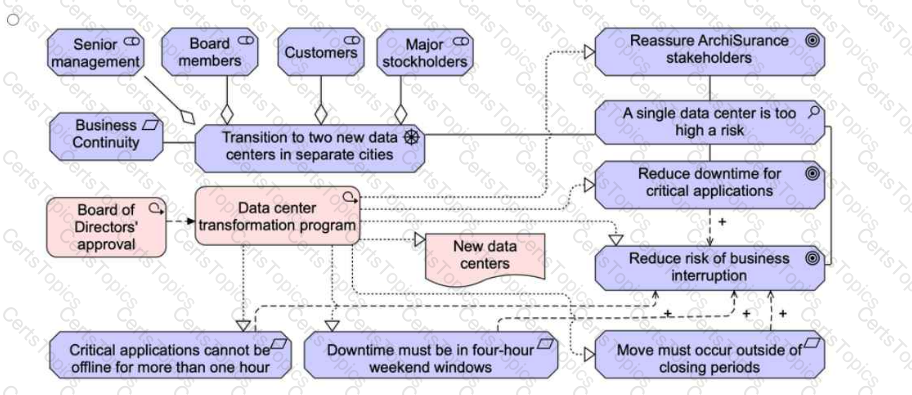 A diagram of a data center
AI-generated content may be incorrect.
A diagram of a data center
AI-generated content may be incorrect.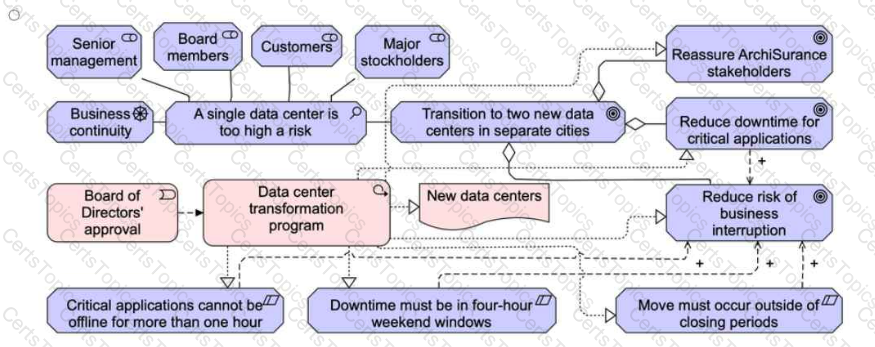 A diagram of data center
AI-generated content may be incorrect.
A diagram of data center
AI-generated content may be incorrect.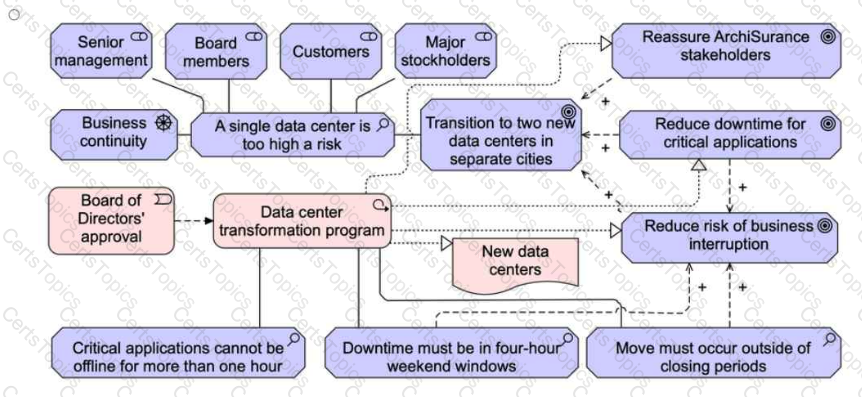 A diagram of data center
AI-generated content may be incorrect.
A diagram of data center
AI-generated content may be incorrect.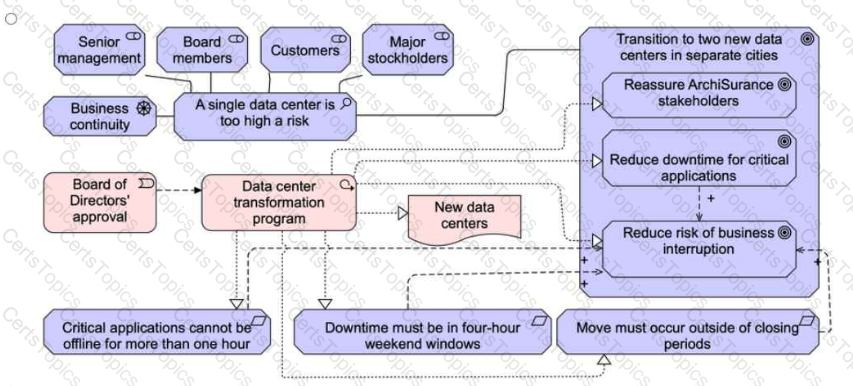 A diagram of a data center
AI-generated content may be incorrect.
A diagram of a data center
AI-generated content may be incorrect.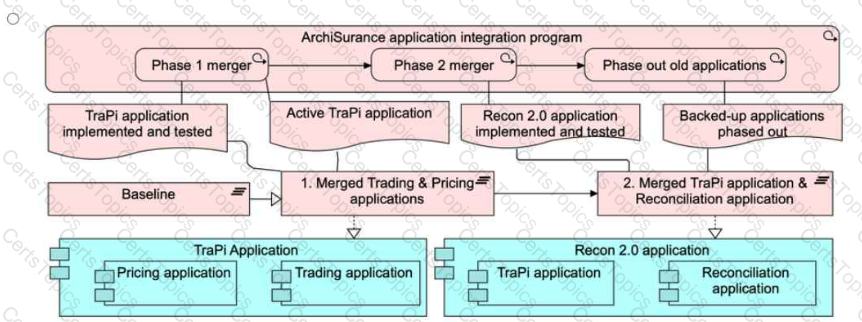 A diagram of a trading application
AI-generated content may be incorrect.
A diagram of a trading application
AI-generated content may be incorrect.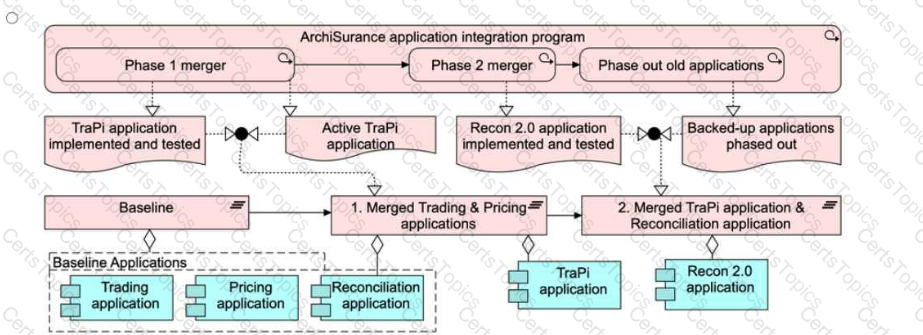 A diagram of a process
AI-generated content may be incorrect.
A diagram of a process
AI-generated content may be incorrect.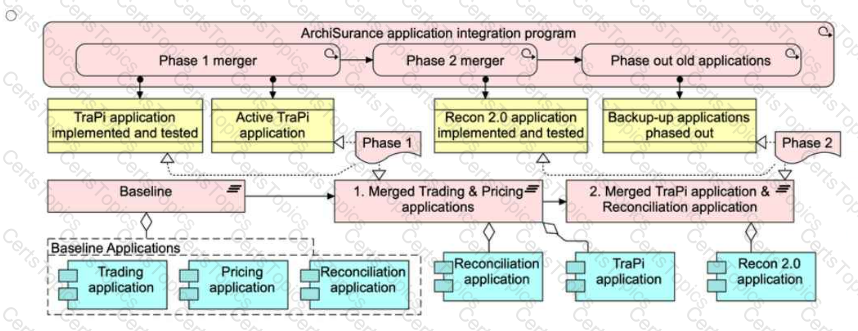 A diagram of a process flow
AI-generated content may be incorrect.
A diagram of a process flow
AI-generated content may be incorrect.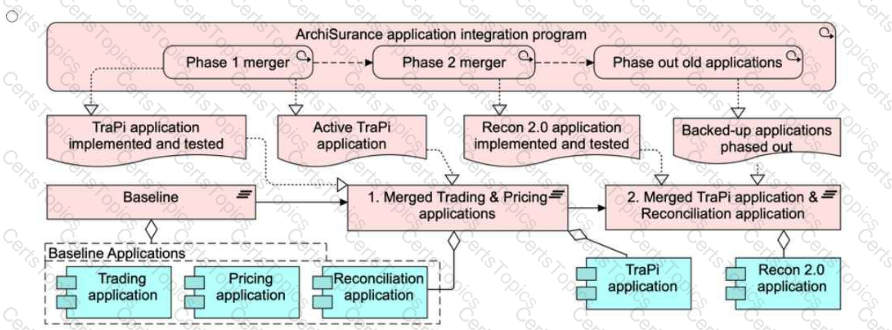 A diagram of a process flow
AI-generated content may be incorrect.
A diagram of a process flow
AI-generated content may be incorrect.



